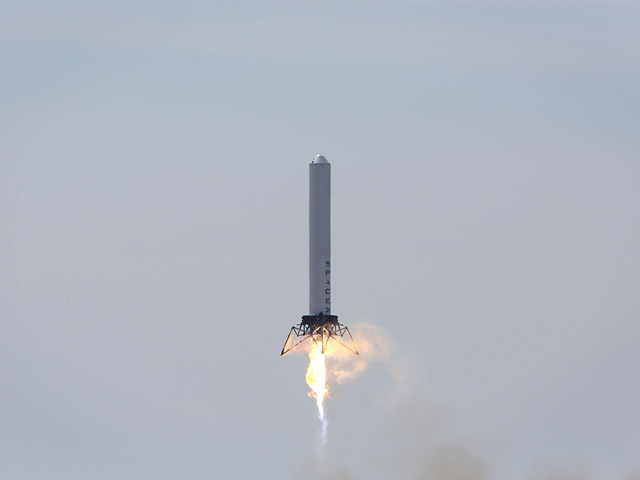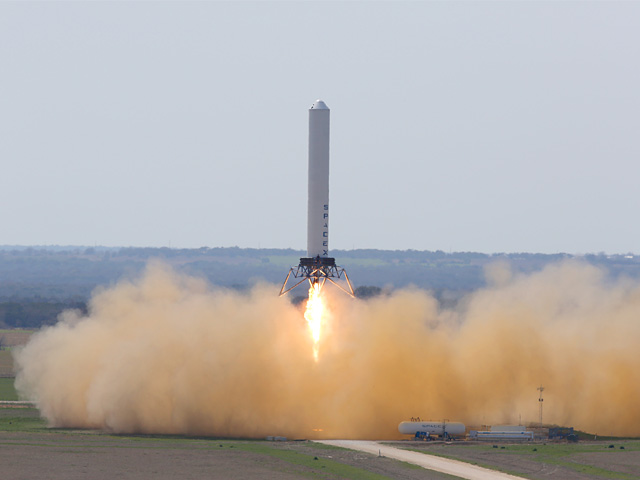.
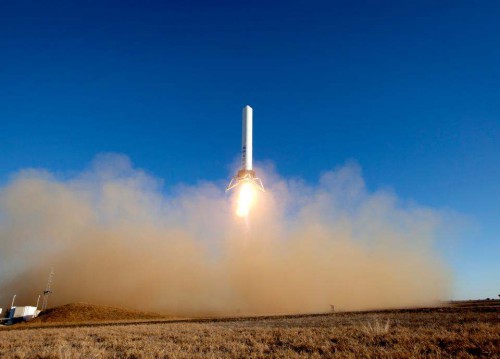
The successful fourth test flight of SpaceX’s 10-story tall Grasshopper Vertical Takeoff and Landing Vehicle (VTVL)
This past Saturday Space Exploration Technologies, or SpaceX, performed a fourth test flight of their Grasshopper Vertical Takeoff and Landing Vehicle (VTVL) at the company’s rocket development facility in McGregor, Texas.
The 10-story tall suborbital reusable rocket, under the power of one kerosene and liquid oxygen burning Merlin 1D engine, leapt 262 feet off the ground – doubling its highest jump to date of 131 feet in December 2012. Using closed loop thrust vector and throttle control, the VTVL hovered for approximately 34 seconds, and touched down with its most accurate precision thus far on the centermost part of the launch pad.
The vehicle, known as Grasshopper VTVL 1.0, is being used to perform flights in support of SpaceX’s development of fully and rapidly reusable rockets. Eventually the commercial spaceflight company wants a reusable first stage for their Falcon-9 rocket, which SpaceX claims will dramatically reduce costs from having to replace rockets after each launch. With Grasshopper, SpaceX is testing the technology that will enable their rocket’s first stage to launch and land intact instead of burning up in the atmosphere upon reentry.
With the engine generating up to 147,000 pounds of thrust, the vehicle’s thrust to weight ratio at touchdown was greater than one – proving a key landing algorithm for Falcon 9 according to SpaceX.
These early test flights are meant to demonstrate Grasshopper’s ability to perform at subsonic speeds from various altitudes, with each flight launching higher, hovering longer, and descending farther than the previous. Over the next year SpaceX hopes to push Grasshopper to a maximum flight altitude of 11,500 feet, with flight times lasting up to 160 seconds in duration. High altitude supersonic flight tests would occur soon after, possibly as early as late 2012, although the company has not released any firm details yet about those later flights.
The company is also currently developing a second generation Grasshopper VTVL, known as Grasshopper 2.0. The current Grasshopper 1.0 sports four fixed steel and aluminum landing legs with hydraulic dampers, and a steel support structure. Grasshopper 2.0 will have lighter-weight landing legs that fold up on the side of the rocket, and the vehicle itself will be 50% taller than Grasshopper 1.0.
Earlier this month SpaceX successfully launched their Dragon spacecraft atop a Falcon-9 rocket from Cape Canaveral, FL. The flight, mission CRS-2, was the company’s second operational supply delivery run to the International Space Station under NASA contract. The company has a $1.6 billion contract with NASA to conduct 12 ISS resupply missions over the next several years.
Quelle: SpaceX
.
Update: 12.03.2013
.
Frams: SpaceX-Video
.
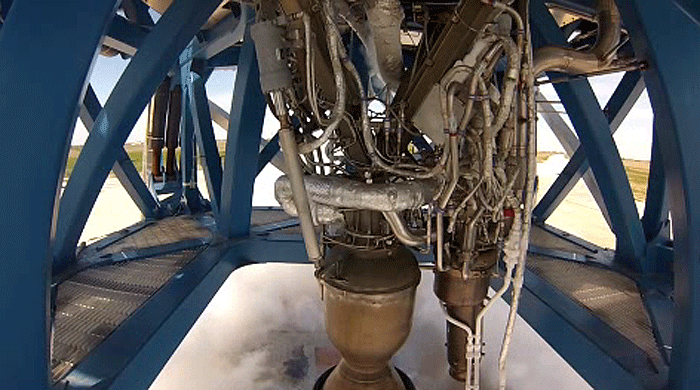

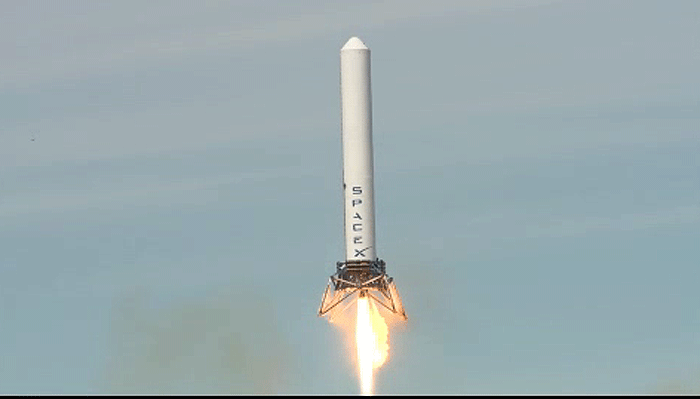
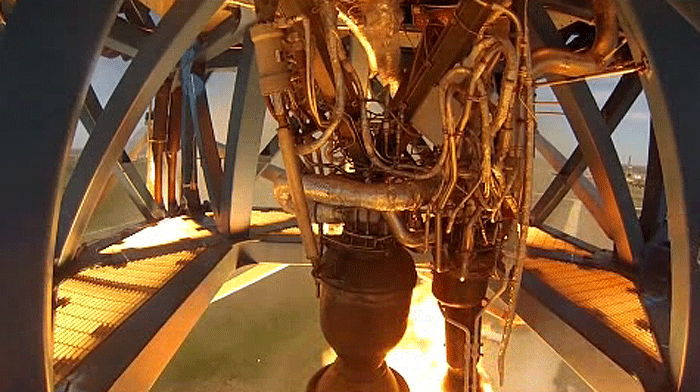
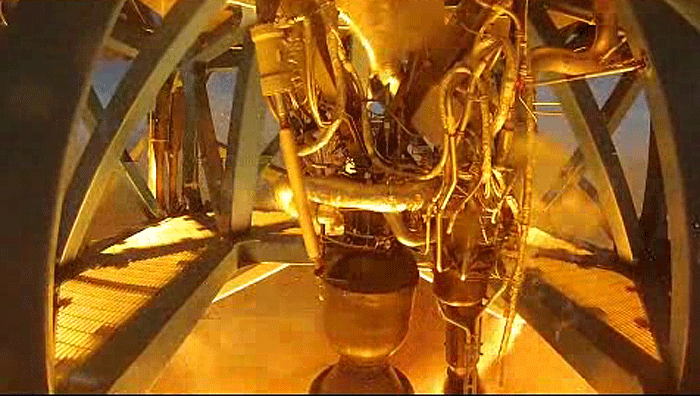
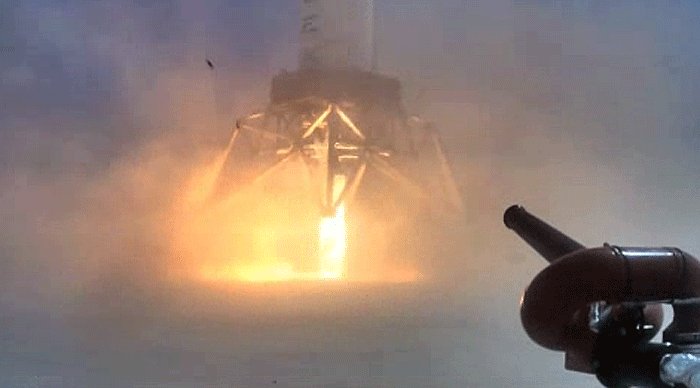

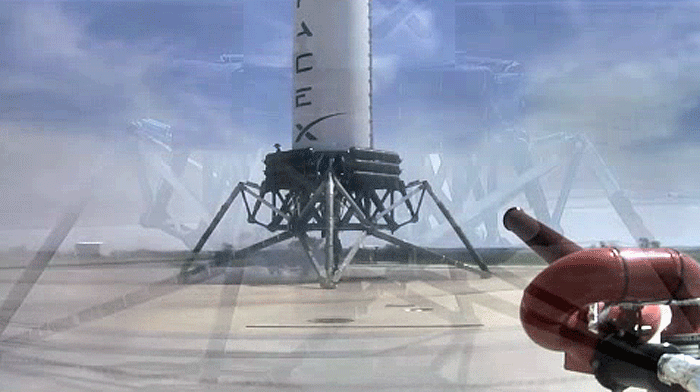
.
